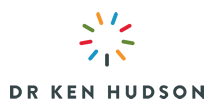The Share a Coke campaign
In 2011, Coca-Cola in Australia was facing a more aggressive and crowded market-place.
It briefed a number of agencies to come up with a new campaign idea that would increase consumption of Coca-Cola over the summer period and get people talking about Coke again particularly among a younger audience.
Advertising agency Ogilvy in Australia won the pitch with a simple idea.
Their insight was to encourage people to reconnect again or start up a conversation with a friend or mate.
This led them to place the names of past or current friends on the labels of Coke bottles for the first time in their brand’s history.
They originally started with 150 of the most popular names in a communication campaign which they called Share a Coke.
The campaign was launched on Television, press and via social media to great acclaim.
Through a Facebook campaign 65000 people indicated who they would like to share a coke with and another 50 new names were released.
There seemed to be 4 key factors in the success of the program:
– It was innovative for Coca-Cola (more on this later)
– The mass market appeal
– The high level of personalisation and
– The user-generated content.
The results:
According to the Marketing Magazine the results of this campaign:
‘The campaign exceeded expectations with millions of Australians getting together and ‘Sharing a Coke’ either virtually or literally.
Young adult consumption increased significantly during the campaign, up by 7%, making 2011 the most successful summer ever.
The campaign earned a total of 18,300,000-plus media impressions.
Traffic on the Coke Facebook site increased by 870% and the Facebook page grew 39%.
In Australia, Coca-Cola was the number one most talked about Facebook page and 23rd globally.
76000 virtual Coke cans were shared online and 378,000 custom Coke cans were printed at local Westfield malls across the country.
The campaign also changed attitudes: over the campaign, teens claimed it gave them a ‘very positive’ impression of Coke.
Scores on ‘always doing new things’,‘is a brand I love’ and ‘for someone like me’ all improved with the young adult audience.
The program has since been rolled out in the UK with similar results and is planned for a US launch.
What are the key lessons for advertisers, marketers and innovators?
I interviewed the Olgivy Head of Brand Planning, Gerry Cyran about the campaign and asked him what he thought were the chief lessons learned:
– Small changes can have a dramatic impact.
In this case the change was a simple personalised message on a bottle – not a new business model or completely new product or service.
As Gerry noted;
If the change or innovation is too big and expensive it can scare clients. Innovation to succeed has to be really smart.
Not everyone can launch a new ipad.
But there are plenty of other opportunities to innovate around media, packaging, communication, pricing, distribution………….
– Have a crystal clear insight.
– Be simple in communicating your idea.
– It is vital to get the client behind the idea — they were fantastic — it was a massive team effort.
In Summary
I love this as a case study.
A simple, small change to some packaging based on a deep consumer insight can have a big impact.
Small can be beautiful.
So before rolling out the next big product, ask yourself — what is a small change to my existing proposition that could potentially have a big impact.
It might just be quicker, more engaging and successful.
And most importantly it will help you get started.
